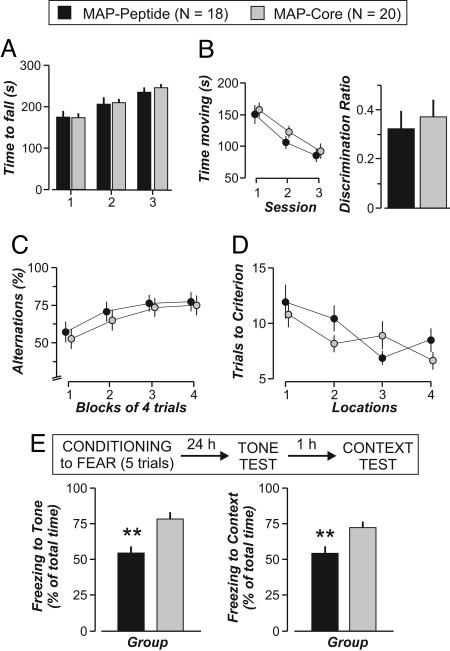Fig. 4.
Immunized mice that produce anti-dsDNA, anti-NR2 Abs and are treated with epinephrine show disruption in associative fear conditioning. (A) Normal motor balance in mice immunized with MAP (n = 18) and treated with epinephrine compared with MAP-core mice (n = 20). ANOVA reveals no difference between groups (F = 0.03, df = 1/31, P = 0.85). (B) Recognition memory, assessed with the two-object test, is similar between groups (discrimination ratios, t = 0.46, P = 0.65, t test). Additionally, the groups show comparable habituation to the chamber in which the two-object test will proceed. (C and D) Mice behave similarly in tests that depend on the integrity of the hippocampus: the T-maze test for spatial working memory (C)(F = 1.39, df = 1/31, P = 0.25, ANOVA on alternations) and the training-to-criterion test (D)(F = 0.92, df = 1/36, P = 0.35, ANOVA on locations). (E) Fear conditioning, assessed by fear of an auditory conditional stimulus (tone) and of the context in which the mice are conditioned, shows that the MAP group has a severely impaired fear response (freezing). The time spent freezing during the tone test is significantly lower (t = 4.31, P < 0.0005, t test), as in the context test (t = 3.1, P < 0.001, t test). All values represent the mean ± SEM.

